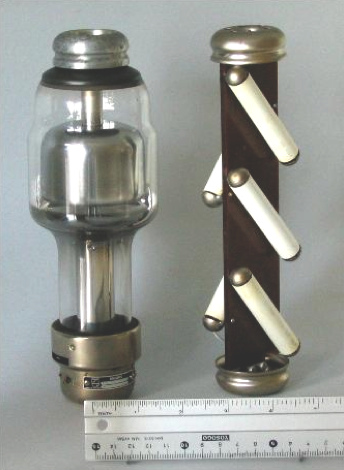Solid State High Tension Rectifier
Ref. G16

From the late seventies and onward, and until the advent of high frequency circuits, semiconductor high tension rectification started advantageously replacing kenotron rectification: compactness, longer life, low forward voltage drop, low reverse current, and the absence of a filament circuit.
The semiconductor material is usually a piece of crystalline silicone, and in an X-ray high tension rectifier, there are usually a series of them, mounted end to end as seen in the picture above.
Early solid state rectifiers were built in a size, with end fittings and suitable electrical specifications permitting their use in high tension transformer tanks in replacement of existing kenotrons.In the picture above left, both the 5-element semi-conductor rectifier and the kenotron of the same size, are made by Philips.
Excellent information on the subject can be found in “Christensen’s Physics of Diagnostic Radiology” , 4th edition, 1990, Lea & Febiger, ed., by James S. Curry, James E. Dowdy, and Robert C. Murray, p.42-46.